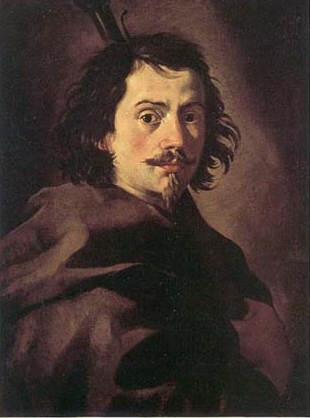
Francesco Borromini, byname of Francesco Castelli, was an Italian architect born in the modern Swiss canton of Ticino who, with his contemporaries Gian Lorenzo Bernini and Pietro da Cortona, was a leading figure in the emergence of Roman Baroque architecture.

Pope Honorius III, born Cencio Savelli, was head of the Catholic Church and ruler of the Papal States from 18 July 1216 to his death. A canon at the Basilica di Santa Maria Maggiore, he came to hold a number of important administrative positions, including that of Camerlengo. In 1197, he became tutor to the young Frederick II. As pope, he worked to promote the Fifth Crusade, which had been planned under his predecessor, Innocent III. Honorius repeatedly exhorted King Andrew II of Hungary and Emperor Frederick II to fulfill their vows to participate. He also gave approval to the recently formed Dominican and Franciscan religious orders.

Pope Honorius IV, born Giacomo Savelli, was head of the Catholic Church and ruler of the Papal States from 2 April 1285 to his death, in 1287. During his pontificate he largely continued to pursue the pro-French political policy of his predecessor, Martin IV.
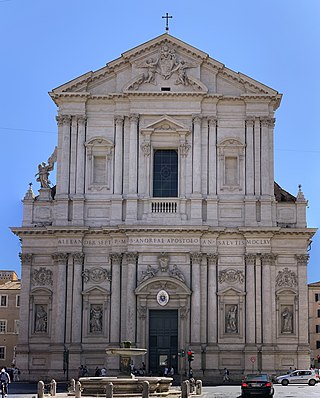
Sant'Andrea della Valle is a minor basilica in the rione of Sant'Eustachio of the city of Rome, Italy. The basilica is the general seat for the religious order of the Theatines. It is located at Piazza Vidoni, at the intersection of Corso Vittorio Emanuele and Corso Rinascimento.
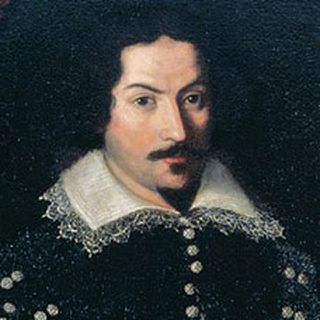
Carlo Maderno (Maderna) was an Italian architect, born in today's Ticino, Switzerland, who is remembered as one of the fathers of Baroque architecture. His façades of Santa Susanna, St. Peter's Basilica and Sant'Andrea della Valle were of key importance in the evolution of the Italian Baroque. He is often referred to as the brother of sculptor Stefano Maderno, but this is not universally agreed upon.

The Basilica of Saint Mary of the Altar in Heaven is a titular basilica in Rome, located on the highest summit of the Campidoglio. It is still the designated church of the city council of Rome, which uses the ancient title of Senatus Populusque Romanus. The present cardinal priest of the Titulus Sanctae Mariae de Aracoeli is Salvatore De Giorgi.

The Basilica of St. Augustine in Campo Marzio, commonly known as Basilica of St. Augustine and Sant'Agostino, is a Roman Catholic titular minor basilica dedicated to Saint Augustine of Hippo. It is the mother church of the Order of Saint Augustine and it is located just northeast of the Piazza Navona in the rione of Sant'Eustachio in Rome, Italy.

The Church of Saint Susanna at the Baths of Diocletian is a Roman Catholic parish church located on the Quirinal Hill in Rome, Italy. There has been a titular church associated to its site as far back as AD 280. The current church was rebuilt from 1585 to 1603 for a monastery of Cistercian nuns founded on the site in 1587, which still exists there.

Santa Francesca Romana, previously known as Santa Maria Nova, is a Roman Catholic church situated next to the Roman Forum in the rione Campitelli in Rome, Italy.

The Basilica dei Santi Bonifacio e(d) Alessio is a basilica, rectory church served by the Somaschans, and titular church for a cardinal-priest on the Aventine Hill in the third prefecture of central Rome, Italy.

The Basilica of Saint Nicholas of Tolentino is a Roman Catholic church and minor basilica that is part of the Augustinian monastery in the hill-town of Tolentino, province of Macerata, Marche, central Italy. The church is a former cathedral of the Roman Catholic Diocese of Tolentino, suppressed in 1586.
Giovanni Battista Savelli was an Italian Roman Catholic cardinal. He was born into the aristocratic Savelli family, which had produced two popes: Honorius III (1216–1227) and Honorius IV (1285–1287) and numerous cardinals carrying this surname: Bertrando, Silvio, Giulio, Fabrizio, Paolo and Domenico Savelli.

The 1287–88 papal election was the deadliest papal election in the history of the Roman Catholic Church, with six of the sixteen cardinal electors perishing during the deliberations. Eventually, the cardinals elected Girolamo Masci, O.Min. as Pope Nicholas IV, almost a year after the death of Pope Honorius IV, who died on April 3, 1287. Nicholas IV was the first Franciscan pope.
Francesco Peparelli was an Italian architect during the 17th century. According to a contemporary historian, Giovanni Baglione, between palaces, castles, churches and convents, Peparelli participated in about seventy construction projects but only about thirty can be attributed to him with certainty.

Santi Vito e Modesto is a Roman Catholic church, and appears to have two facades, a 20th-century marble facade on Via Carlo Alberto, but a rustic brick older entrance, in reality the apse, on the Via San Vito in the Rione Esquilino of Rome, Italy. It has also been called Santi Vito, Modesto e Crescenzia. It is located in the Rione Esquilino, adjacent to the Servian Wall, near the former Monastery of the Viperesche.

Santa Lucia del Gonfalone is a church in the diocese of Rome, Italy. It is located on Via dei Banchi Vecchi just one block south of Corso Vittorio Emanuele. The former site of the Archconfraternity of the Gonfalone, the Claretian Missionaries have their provincial headquarters here. The church was made a cardinalate deaconry by Pope John Paul II on 21 October 2003.

Santa Maria dei Sette Dolori is a Baroque church in Rome built attached to a convent in the rione of Trastevere, located on Via Garibaldi, near the intersection with Via dei Panieri.
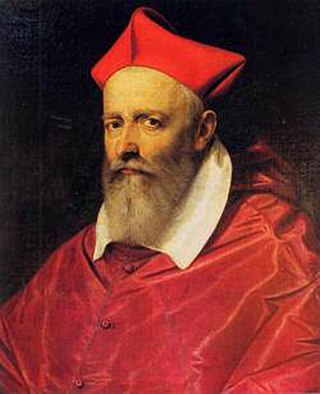
Giacomo Savelli (1523–1587) was an Italian Roman Catholic cardinal and bishop. He participated in several papal conclaves and held several administrative positions in the Catholic Church during his 48 year career with the Church during the mid 16th century.

San Trifone in Posterula was an ancient titular church of Rome, now lost. It was located at the corner of Via dei Portoghesi and Via della Scrofa, in the Campo Marzio rione of the city.
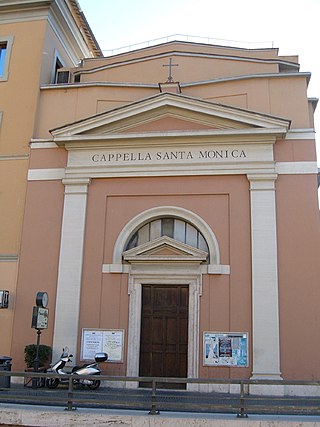
Santa Monica degli Agostiniani is a 20th-century Augustinian chapel and titular church in central Rome, immediately south of the Vatican, dedicated to Saint Monica.























